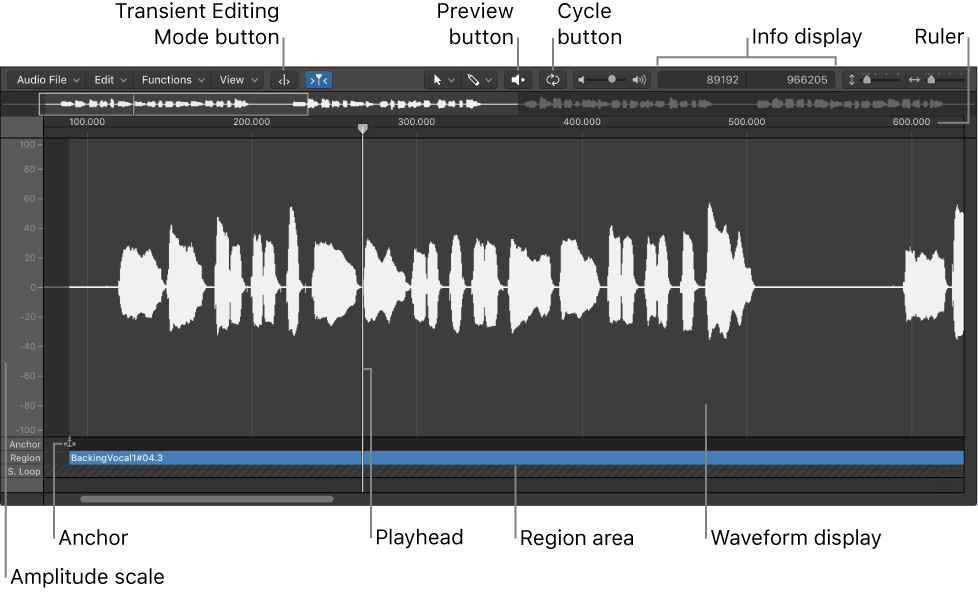Toggle Software Monitoring
Changes the state of software monitoring. As stated in the documentation you should use direct monitoring from your interface when you don’t need to hear the sound with any of the inserts. Monitoring through plug-ins can cause uncomfortable latency.
Before recording audio in Logic Pro — Apple Support
Enable software monitoring, which allows you to monitor incoming audio through any effects that are inserted into a record enabled audio track, if desired. Many audio interfaces offer a direct or hardware monitoring option which sends the audio signal being recorded to a monitor output before the signal is sent to Logic Pro. If your interface offers direct recording you should use it, and only use software monitoring if you’re using effects on an record enabled channel strip.
General Audio preferences in Logic Pro — Apple Support
Note: When Software Monitoring is on, the audio signal is processed via software, and a certain amount of audible delay (commonly referred to as latency) is inevitable.
